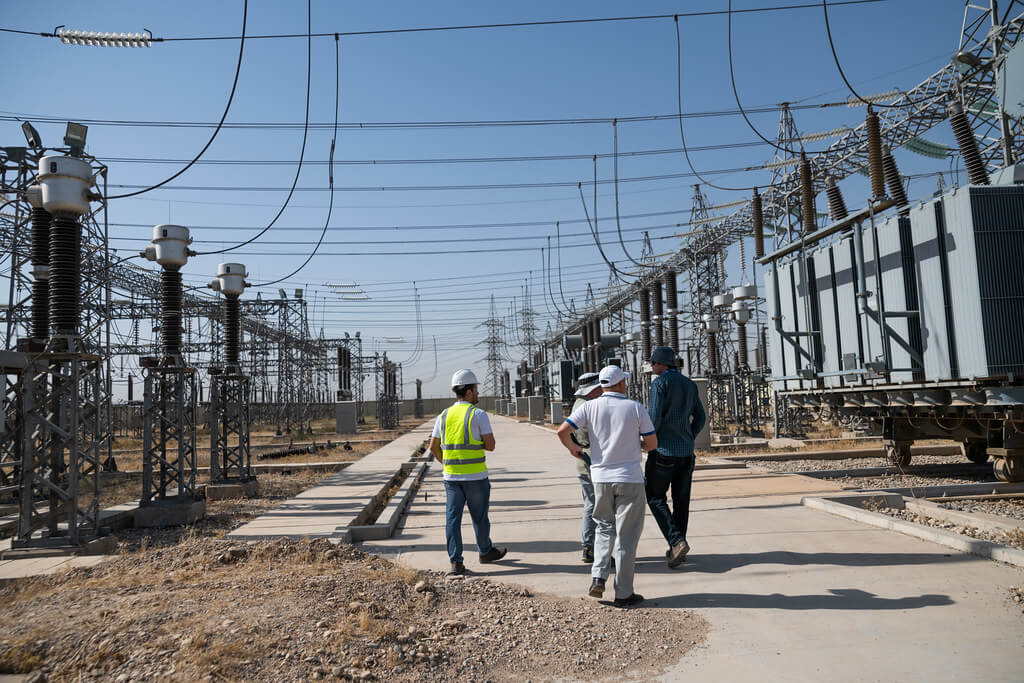Three insights from Iraq for the reconstruction of Ukraine
With the damage wrought by the Russian invasion of Ukraine already estimated at hundreds of billions of euros, the European Commission wants to establish a solidarity trust fund for the initial recovery after the war. According to Clingendael expert Erwin van Veen, three useful lessons can be learnt from a similar mechanism that the United Nations established in Iraq during the fight against Islamic State.
In 2017, the fight against Islamic State (IS) badly affected seven of Iraq’s eighteen governorates. The damage of war and destruction exceeded 45 billion US dollars1 and six out of forty million Iraqis were displaced. Today, the damage wrought by the Russian invasion of Ukraine is already estimated at hundreds of billions of euros2 – reflecting the greater damage of conventional warfare – while about 7 out of 41 million Ukrainians are displaced (excluding Crimea).3
As the war in Ukraine is still ongoing, it is impossible to assess how much damage the conflict will cause. However, this has not stopped the European Commission from drawing up plans to establish a solidarity trust fund to kick into action when the guns fall silent: the Rebuild Ukraine Facility. Global ambivalence towards the conflict beyond the European Union and the United States makes it likely that these actors will end up contributing most to the trust fund via a mix of loans and grants.
The fund will serve as a crucial mechanism to enable the initial recovery, return and rehabilitation needs of a war-torn and broke Ukraine. With that in mind, there are useful lessons to be learnt from a similar mechanism that the United Nations established in Iraq during the fight against IS.
It is likely the success factors in Iraq can be replicated during reconstruction efforts in Ukraine
In 2015, the UN established the Funding Facility for Stabilization (FFS) in order to rehabilitate public infrastructure and provide basic services to communities in the five Iraqi governorates most affected by IS. Scheduled to function until the end of 2023 (for eight years), the FFS operates on a budget of 1.88 billion US dollars that has benefitted from contributions by at least 29 countries. In other words, it is a significant operation that has achieved a notable set of outputs over the past six to seven years, at least according to its 2021 annual report4 as well as an independent evaluation.5
In particular, the FFS has rehabilitated and rebuilt a vast array of essential public infrastructure fast and without major (corruption) scandals so far, including schools, water plants, hospitals and government offices. Given the scope of both destruction and corruption in Iraq, this is no small feat (Iraq ranked 157 out of 180 on the Corruption Perceptions Index of 2021)6 . Note that corruption risks are also significant in Ukraine (it ranked 122 out of 180 on the same 2021 Corruption Index).

I recently spoke with UN staff in Mosul about the success factors enabling such performance. This conversation suggests that these factors included a cooperative central government (at times less so at the provincial level7 ), a private sector capable of undertaking construction work effectively, sustained international resource mobilisation, a clear lead agency to take charge of the trust fund (in this case: the United Nations Development Programme, UNDP) and a senior-level UN champion to manage bureaucracy and ensure high-level engagement (in this case: Ms. Lise Grande as deputy special representative of the UN Secretary-General).
It is likely these success factors can be replicated during reconstruction efforts in Ukraine. In addition, various useful lessons can be learned from the FFS’ performance in Iraq even though it is too early for any final assessment.
1. Reducing corruption as much as possible
To begin with, it is possible to prevent major corruption scandals by using well-thought-out operating and tendering procedures that are relatively fast. This, however, requires significant engineering, financial and reputational vetting capabilities on the part of the trust fund, as well as flexible hiring and firing procedures to deploy the small army of necessary local engineers, administrators and accountants.
For example, in Iraq FFS engineers first establish a bill of quantity that details all elements required for the reconstruction of a particular facility. Once the relevant Iraqi government official has signed off on the bill, it is handed over to the trust fund’s procurement office that checks, prices and publishes it for tender. Companies that put in an offer are evaluated on technical competence, financial solvability and connections with armed groups or political parties (including by checks against a blacklist that is kept up to date).
Once a contract is awarded, performance-based pay kicks in with clear milestones that are verified by – again – FFS engineers. Procurement in this fashion takes between three to eight months depending on the size of the facility to be reconstructed. A similar mechanism could work in Ukraine.
2. Reconstructing what you can touch, but also what you can sense
A second lesson consists of the need to develop plans for physical reconstruction of (public) infrastructure at the same pace and in alignment with a broader recovery strategy on the part of the government. The reconstruction of infrastructure is expensive and governments emerging from war typically do not have the means to undertake it at a large scale. Here, the international community can step in.
Yet, rebuilding infrastructure is not sufficient to enable the return of the displaced and to revive normal life. This also requires ensuring local safety, good administration, restoring social cohesion, relaunching economic activity and organising non-physical service delivery components such as teachers, maintenance capability, and a functional framework to regulate economic activity.
It is in these regards that the independent evaluation of the FFS notes discrepancies between the trust fund’s performance and that of the Iraqi government.8 When such gaps become too large, they put the sustainability of physical reconstruction at risk. In other words, joined up material and immaterial recovery plans must be put in place with a high-level coordination mechanism that enables intervention to close gaps once they emerge.
3. Restoring local administration is key, but can be sensitive
A third lesson is linked to the second and suggests that the quality of local administration is fundamental to the durability and continuity of reconstruction efforts. While this topic falls largely outside of the official remit of the FFS, a parallel effort is needed to upgrade local administrative capabilities in both Iraq and Ukraine. This includes the improvement of the ability of communities to engage with their local authorities, as another independent review of the FFS noted.9 This puts sensitive questions on the table such as decentralisation, local checks and balances as well as the fiscal authority of lower levels of government.
In other words, large-scale reconstruction both requires and invites (re-)consideration of pre-existing administrative structures, the way they operate and the manner in which they link to national governance. In turn, this demands a proper understanding of the political incentives at play and a willingness to view reconstruction both through political and technical lenses. These particular insights gain further salience because the international community will leave a significant part of the reconstruction bill uncovered even in the best scenarios.
In brief, the Iraqi experience of the FFS suggests that solid operating procedures against corruption, nesting physical reconstruction in a broader socio-economic recovery strategy and upgrading the quality of local administration are essential components for an international trust fund to effectively support the reconstruction of Ukraine. Post-conflict recovery around the world has seen its fair share of trust funds over the past decades and many other examples can be mentioned. These include the Afghan Reconstruction Trust Fund, the Syria Reconstruction Trust Fund and the Multi-Donor Trust Fund for South Sudan.
Most of them have been run by the World Bank or the United Nations. It is likely that the reconstruction of Ukraine will have a far bigger EU footprint and level of support than these, but significant experience has accumulated outside of the European Union that can help. The Funding Facility for Stabilization in Iraq is a good place to start.
- 1World Bank Group, ‘Iraq: Reconstruction and Investment – Part 2 Damage and Needs Assessment of Affected Governorates’, January 2018.
- 2Jorge Valero, ‘Europe Expects to Pay Bulk of Ukraine’s Reconstruction Costs’, Bloomberg, 19 April 2022.
- 3United Nations Office for the Coordination of Humanitarian Affairs, ‘Ukraine’, 15 June 2022.
- 4United Nations Development Programme, ‘Funding Facility for Stabilization 2021 Annual Report’, 19 April 2022.
- 5AARC Ltd in Association with Tana Copenhagen, ‘Evaluation of the Funding Facility for Stabilization in Iraq Volume 1: Final Evaluation Report’, 12 July 2021.
- 6Transparency International, ‘Corruption Perceptions Index’, 2021.
- 7Zmkan Ali Saleem and Mac Skelton, ‘The Failure of Reconstruction in Mosul: Root Causes from 2003 to the Post-ISIS Period’, The Institute of Regional and International Studies, June 10 2020.
- 8For example, FFS reconstruction of infrastructure to enable returns outpaced policies and initiatives on the part of the Government of Iraq to increase economic activity and livelihoods. See: AARC Ltd in Association with Tana Copenhagen, ‘Evaluation of the Funding Facility for Stabilization in Iraq Volume 1: Final Evaluation Report’, 12 July 2021.
- 9USAID, ‘Evaluation Funding Facility for Stabilization’, 6 April 2020.




0 Reacties
Reactie toevoegen